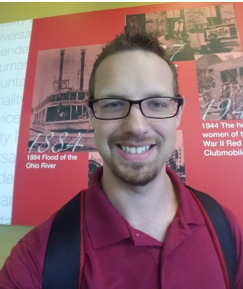
Teachers at Manitou Park Elementary School in Tacoma, Washington, where Taylor is the vice principal, were recording data from the assessments three times a year on paper. Scores for each student were then entered into a database and students were grouped based on those scores. The approach meant detailed information about students’ reading abilities wasn’t available without sifting through reams of paper, which made it difficult to determine what each student needed to learn and improve.

Taylor, who had little tech background, initially laughed at the suggestion that she could build an app to solve the problem. But she eventually dug into PowerApps, a platform designed to make it easy. She created a way for teachers to enter reading assessment information, store it in a SharePoint list and track students’ progress through Power BI data charts.
Teachers can now easily access the app and data through Teams, Microsoft’s chat-based collaboration hub, on their phones or tablets and do a better job of meeting the needs of students — and Taylor says it was all surprisingly easy to do. “It’s not ‘I wish someone could make this’ anymore,” she says. “It’s ‘What do I want to make? I know it can happen, and how do I get it there?’”
Taylor is one of many people around the world who are using Microsoft tools, platforms and online communities to build apps and solutions that were once exclusively the purview of professional developers. That idea of empowering developers of all skill levels was a central focus of Microsoft’s Build conference this year.
Charlotte Yarkoni, corporate vice president of Microsoft Commerce + Ecosystems, says Build 2019 was a reflection of what it now means to be a developer — that with the right tools, anyone can use technology to build something extraordinary. “Microsoft has a broad range of platforms that help people build apps, solve problems and create great things with technology — and they’re not just for experienced coders and engineers,” Yarkoni says. “Whether you’re a high school student with a big idea or a seasoned computer scientist, tools like VS Code, Azure and GitHub can help you bring your ideas to life.”
 Nick Gill, a training specialist for the American Red Cross, had little knowledge of technology when he decided to tackle a challenge facing the organization’s instructors, who were using a paper-based process to order supplies needed for teaching classes. The forms were sent to a logistics coordinator who ordered the supplies, such as textbooks and bandages, but instructors never knew when the supplies would arrive, and supervisors had no idea about what was being ordered each month.
Nick Gill, a training specialist for the American Red Cross, had little knowledge of technology when he decided to tackle a challenge facing the organization’s instructors, who were using a paper-based process to order supplies needed for teaching classes. The forms were sent to a logistics coordinator who ordered the supplies, such as textbooks and bandages, but instructors never knew when the supplies would arrive, and supervisors had no idea about what was being ordered each month.
“That’s when it really hit home for our leadership that gosh, this isn’t working,” says Gill, who’s based in Dayton, Ohio. “We needed to be able to answer some very basic questions, and we weren’t able to do so because we were sitting here with pen and paper.”
Gill taught himself to use Power BI, PowerApps and Flow, which automates tasks across different apps, and created a shopping cart app for instructors to order supplies. The app automatically sends updates to instructors on the status of their orders and has shortened order cycles from three to four weeks to four or five business days, Gill says. Other Red Cross workers have also created apps, including a tool to connect people arriving at the same destination so they can share rental cars and a check-in app for volunteers working at disaster sites.
Several Red Cross volunteers around the country now meet regularly on Skype or Teams to work on developing tech solutions to address organizational challenges. The growing culture of innovation has helped to better engage the Red Cross’s largely volunteer workforce, Gill says. “We struggle at times to engage volunteers in things they’re interested in,” he says. “People might not be able to respond to a scene, but they can sit at their computer and create an app.”
